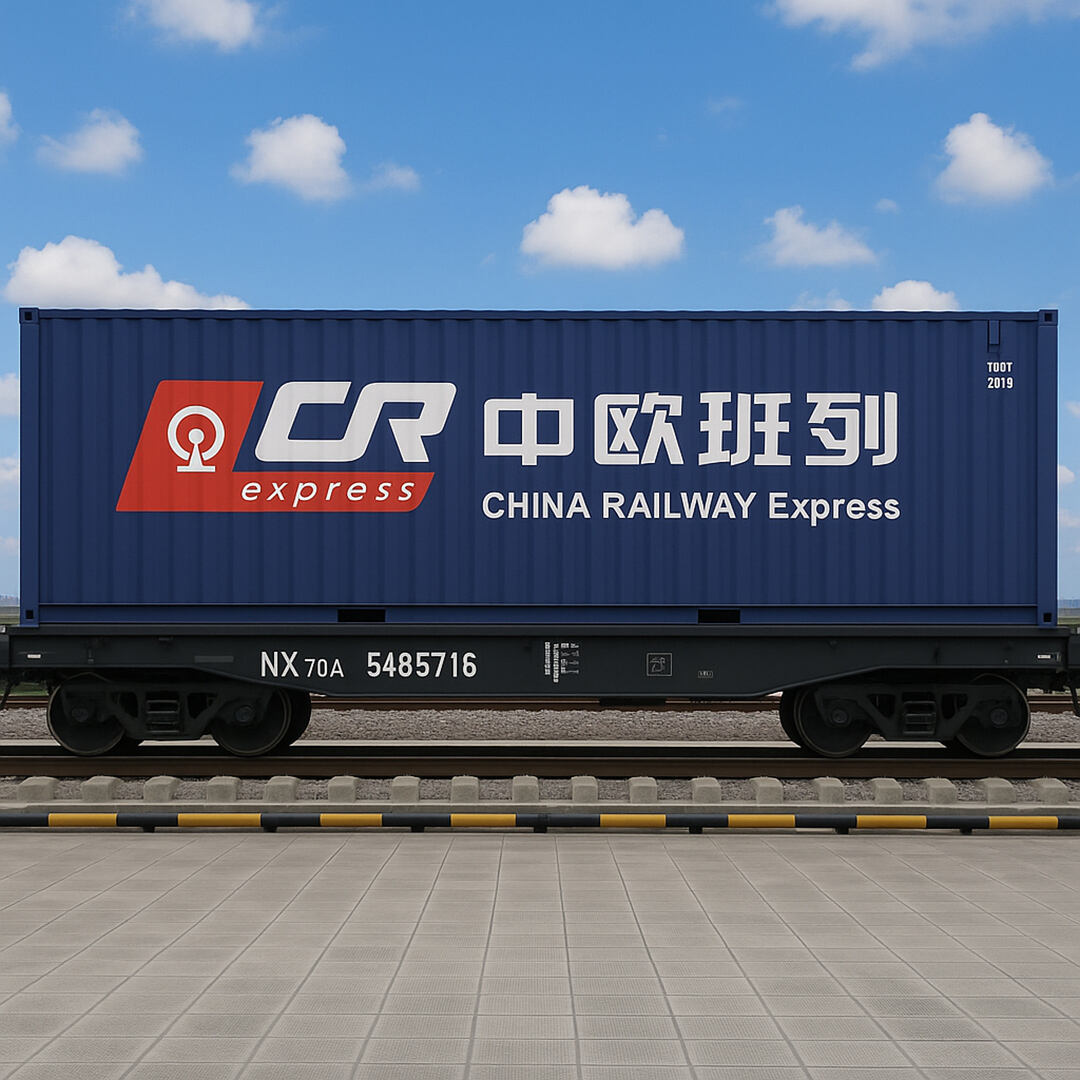European businesses have found rail shipping from China as one of the main new directions in global logistics and transportation systems. Traditional sea and air transportation has always governed this sector but now rail transportation increases in popularity. This paper investigates the emerging rail transportation trend through examination of the superior cost and time features relative to sea and air shipment alongside a detailed overview of main rail networks and operational capabilities.

Cost and Time Benefits Compared to Sea and Air
Rail freight has obtained widespread popularity because it provides an equitable combination of financial expenses and transportation durations.
The transportation of products by sea leads to reduced expenses yet extends shipment duration when moving from China to Europe to between 30 days and 40 days. The swift delivery of air freight lasts between one and two days while remaining excessively expensive at the same time.
Rail freight services provide companies with transport options that lie between oceanic shipping and aerial freight. Rail delivers parcels in 15 to 20 days at cheaper rates than air transport does which enables it as an attractive solution between sea and air shipping. The combination of faster delivery times than sea shipment makes rail freight suitable for companies that cannot afford air freight prices. The reliability of rail transport schedules and reduced delays from weather elements together with high-security rates for deliveries increase its market desirability.
Organizations pursuing sustainability now consider carbon footprint reduction as essential and rail transport presents them with an environmentally advantageous alternative. Since air transports more CO2 than rail does, rail freight generates less pollution and it delivers more cargo with fewer emissions per ton-kilometer when compared to ocean transports. The environment-friendly nature of rail transport suits global corporations because it lets them meet their targets for lowering their impact while building a stronger green image.
Major Rail Routes and Their Operational Efficiency
Rail freight popularity has been boosted considerably by the advancement of primary rail links between China and Europe. Several principal rail transportation lines have established reliable and stable connections between main industrial regions across global areas.
The New Eurasian Land Bridge serves as the main rail connection that consists of stops in China followed by Kazakhstan and then Russia before Belarus and Poland before concluding in Germany. Traveling across Eurasia through this route creates a major commercial pathway by cutting transportation distances by stretching into the expansive land mass. Travelers across northern China can use the Trans-Siberian Railway to reach essential Russian city locations and continue onward through European territories.
The operational effectiveness of these routes depends heavily on the strategic infrastructure investments created by China along with market participant countries. Through its multi-billion dollar Belt and Road Initiative China has led the modernization of rail networks as well as the reduction of barriers during transit. System improvements in the routes incorporate rail gauge standardization together with cell time cuts at junctions and upgrades in logistic processing capabilities.
The implementation of advanced logistical solutions works as an important method to boost operational effectiveness. Modern tracking technologies enable decisions through real-time transportation updates which enhances operational visibility and interconnectivity between shipping locations. Better customs management together with regulatory developments minimize obstacles that allow international cargo to move without delays along diverse international trade parameters.
The European rail system enables DB Cargo and other national rail companies to integrate seamlessly which creates more efficient last-mile deliveries. Transcontinental rail can transfer cargo to local delivery networks directly through this integrated system which results in efficient delivery of goods to their terminal destinations.
The reliability of transport routes has been made permanent through international agreements and partnership deals between bordering nations. These agreements simplify international train operations by removing official barriers thus enabling trains to move without major delays.
Rail freight movement from China to Europe has expanded because it provides better speed combined with lower costs than standard ocean and air services do. Rail corridors established through coordinated international efforts alongside infrastructure improvements make rail freight more viable. Global trade developments suggest rail freight will become more central in the near future because it will complement sea and air delivery systems as a key logistics element.
 EN
EN
 AR
AR
 BG
BG
 HR
HR
 CS
CS
 DA
DA
 NL
NL
 FI
FI
 FR
FR
 DE
DE
 EL
EL
 HI
HI
 IT
IT
 JA
JA
 KO
KO
 NO
NO
 PL
PL
 PT
PT
 RO
RO
 RU
RU
 ES
ES
 SV
SV
 TL
TL
 IW
IW
 ID
ID
 LT
LT
 SK
SK
 SL
SL
 UK
UK
 VI
VI
 GL
GL
 HU
HU
 TH
TH
 TR
TR
 MS
MS
 GA
GA
 IS
IS
 BN
BN
 LO
LO
 LA
LA








